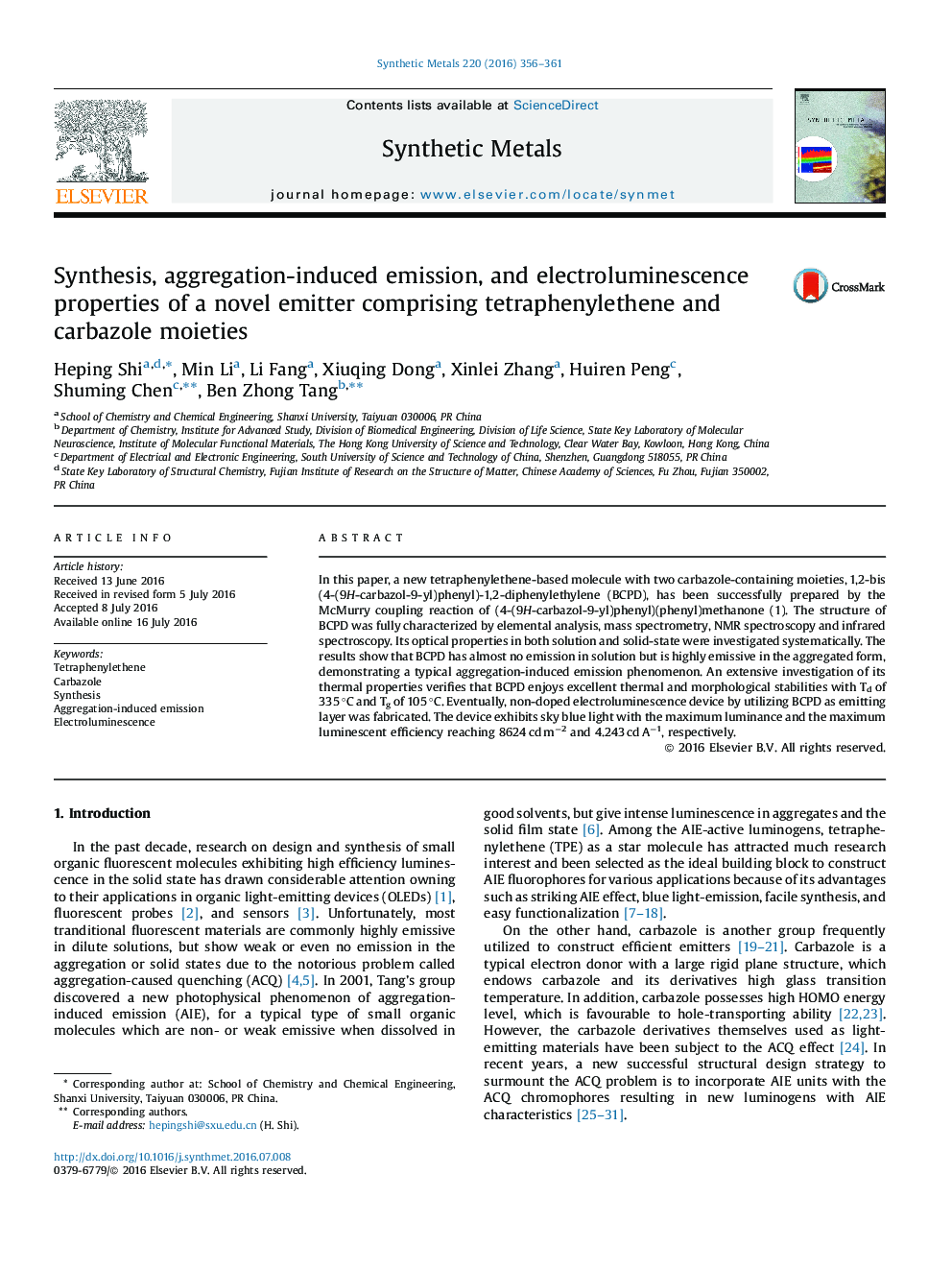| Article ID | Journal | Published Year | Pages | File Type |
|---|---|---|---|---|
| 1440102 | Synthetic Metals | 2016 | 6 Pages |
•A new compound BCPD is synthesized by combining tetraphenylethene and carbazole moieties.•The compound exhibits aggregation induced emission (AIE) properties.•Efficient multi-layer non-doped electroluminescent device fabricated with BCPD shows good electroluminescent performance.
In this paper, a new tetraphenylethene-based molecule with two carbazole-containing moieties, 1,2-bis(4-(9H-carbazol-9-yl)phenyl)-1,2-diphenylethylene (BCPD), has been successfully prepared by the McMurry coupling reaction of (4-(9H-carbazol-9-yl)phenyl)(phenyl)methanone (1). The structure of BCPD was fully characterized by elemental analysis, mass spectrometry, NMR spectroscopy and infrared spectroscopy. Its optical properties in both solution and solid-state were investigated systematically. The results show that BCPD has almost no emission in solution but is highly emissive in the aggregated form, demonstrating a typical aggregation-induced emission phenomenon. An extensive investigation of its thermal properties verifies that BCPD enjoys excellent thermal and morphological stabilities with Td of 335 °C and Tg of 105 °C. Eventually, non-doped electroluminescence device by utilizing BCPD as emitting layer was fabricated. The device exhibits sky blue light with the maximum luminance and the maximum luminescent efficiency reaching 8624 cd m−2 and 4.243 cd A−1, respectively.
Graphical abstractFigure optionsDownload full-size imageDownload as PowerPoint slide
